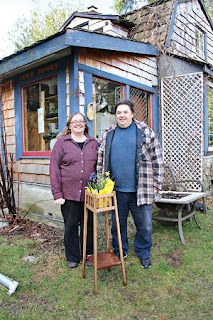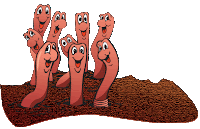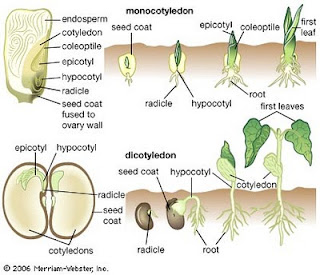As Robin Williams said, "Spring is nature's way of saying, "Let's party!"
New Garden Club members, Ellen and Gary deCasmaker, are hosting a Spring Fling, the official opening of their Eternal Seed Garden Centre, on Saturday March 26 from 10 am to 5 pm. The new garden center, located at the corner of Kelly Creek Road and Hwy 101, will sell heritage seed packages, plants, herbs, fruit trees, and soft fruit such as strawberries, blueberries and raspberries.
During the Spring Fling, Ellen and Gary will be offering a seed-starting seminar beginning at 9 am. A $35 fee includes all materials, including a tray, inserts, garden marker, soil, packages of seeds or cuttings and an informational package. Pre-registration is required. For further information, please call 604.487.1304.
If you attended Seedy Saturday, you would have seen the wide array of heritage seeds offered at Eternal Seed. Their seed catalog may be viewed on their website, Eternal Seed.
Information submitted by Wendy Devlin
Thursday, March 24, 2011
Friday, March 18, 2011
Another Way To Improve Your Soil
Composting with Worms
You can easily compost your kitchen scraps using red wiggler worms (Eisenia foetida). To get started, obtain a wooden or plastic container with adequate ventilation, drainage, a lid (worms like it dark) and a tray to catch the excess moisture (liquid fertilizer) that is sometimes generated. Next, fill the container with cellulose-based bedding material such as shredded newspaper, compressed coconut fibre, rotting leaves or a combination of these. Moisten the bedding until it is slightly damp like a wrung-out sponge and add a handful of sand to aid in the worms' digestion. Finally add the worms themselves.
To find out how many worms you need, keep in mind that they eat about half their own body weight every day. For example, if by the end of the week you have produced 3.5 lbs of food scraps, you need one lb of worms in your bin.
When you add kitchen scraps to the bin, make sure to prevent fruit fly problems by burying them in the bedding and adding them to a different spot each time. Red wigglers will eat anything we do (and a lot more), but to eliminate the possibility of attracting pests or creating unpleasant odours, avoid adding meats, dairy products, grains or oily cooked foods. After 3 or 4 months of consuming the food and bedding, the worms will be living in an environment composed largely of their own waste. It is now time to renew the process by separating the worms from the dark, crumbly compost they have created. There are several ways of doing this but the easiest is as follows: Push everything in the bin over to one side, creating an empty space of 1/3 the bin's volume. Fill this space with fresh bedding and, for the next month, add scraps only to this side of the bin. The worms will migrate over, leaving their "black gold" wormless and ready for you to harvest.
Excerpts were taken from the Greater Victoria Compost Education Centre's brochure, "Here's the Dirt! A Guide to Home Composting," which was available last week from Powell River's own compost guru, Carol Engram, at Powell River's Seedy Saturday.
You can easily compost your kitchen scraps using red wiggler worms (Eisenia foetida). To get started, obtain a wooden or plastic container with adequate ventilation, drainage, a lid (worms like it dark) and a tray to catch the excess moisture (liquid fertilizer) that is sometimes generated. Next, fill the container with cellulose-based bedding material such as shredded newspaper, compressed coconut fibre, rotting leaves or a combination of these. Moisten the bedding until it is slightly damp like a wrung-out sponge and add a handful of sand to aid in the worms' digestion. Finally add the worms themselves.
To find out how many worms you need, keep in mind that they eat about half their own body weight every day. For example, if by the end of the week you have produced 3.5 lbs of food scraps, you need one lb of worms in your bin.
When you add kitchen scraps to the bin, make sure to prevent fruit fly problems by burying them in the bedding and adding them to a different spot each time. Red wigglers will eat anything we do (and a lot more), but to eliminate the possibility of attracting pests or creating unpleasant odours, avoid adding meats, dairy products, grains or oily cooked foods. After 3 or 4 months of consuming the food and bedding, the worms will be living in an environment composed largely of their own waste. It is now time to renew the process by separating the worms from the dark, crumbly compost they have created. There are several ways of doing this but the easiest is as follows: Push everything in the bin over to one side, creating an empty space of 1/3 the bin's volume. Fill this space with fresh bedding and, for the next month, add scraps only to this side of the bin. The worms will migrate over, leaving their "black gold" wormless and ready for you to harvest.
Excerpts were taken from the Greater Victoria Compost Education Centre's brochure, "Here's the Dirt! A Guide to Home Composting," which was available last week from Powell River's own compost guru, Carol Engram, at Powell River's Seedy Saturday.
To 'get the real dirt on worms', the Powell River Library has a great little book, "Worms Eat My Garbage" or you can check out a comprehensive Manual of On-Farm Vermicomposting and Vermiculture, by Glenn Munroe, of the Organic Agriculture Centre of Canada.
Fun with Fungus Workshop
Attention, mushroom lovers. Here's an opportunity to learn about growing mushrooms in your own backyard!
Skookum, a Powell River cooperative, is offering just such a workshop on Sunday, April 10th from 11:00 am to 1:00 pm. This workshop will focus on growing shiitake and oyster mushrooms using dowel plugs in hardwood logs. Some other methods will be very briefly covered, but the dowel plug method is easy to do, and provides an efficient and aesthetic way to grow.
Further information is available at Skookum Blog.
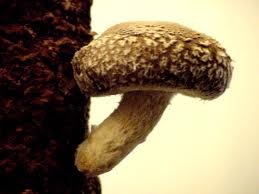 |
| Shittake Mushroom |
Skookum, a Powell River cooperative, is offering just such a workshop on Sunday, April 10th from 11:00 am to 1:00 pm. This workshop will focus on growing shiitake and oyster mushrooms using dowel plugs in hardwood logs. Some other methods will be very briefly covered, but the dowel plug method is easy to do, and provides an efficient and aesthetic way to grow.
Further information is available at Skookum Blog.
Wednesday, March 16, 2011
Monocots and Dicots
There are two major groups of flowering plants that are easily recognized by their cotyledons. Cotyledons are seed leaves that emerge when germination occurs.
A cotyledon is a significant part of the embryo within a plant seed. Upon germination, the cotyledon may become the embryonic first leaves of a seedling. The number of cotyledons present is one characteristic used by botanists to classify angiosperms (flowering plants).
Species with one cotyledon are called monocotyledons or monocots and species with two embryonic leaves are termed dicotyledons or dicots.
MONOCOTS
There are approximately 59,300 species within the monocot group. The largest family in this group, and in the flowering plants as a whole, are the orchids (family Orchidaceae) with more than 20,000 species.
Many plants cultivated for their blooms are also from the monocot group, notably lilies, daffodils, irises, amaryllis, orchids, cannas, hemerocallis, bluebells and tulips.
In agriculture the majority of the biomass produced comes from monocots. The true grasses are the most economically import family in this group. These include all true grains (rice, wheat, maize, etc.), the pasture grasses, sugar cane and the bamboos.
Other important monocot families are the palm family (Arecaceae), banana family (Musaceae), ginger family (Zingiberaceae) and the onion family (Alliaceae).
Many monocots are herbaceous and do not have the ability to increase the width of a stem.
One of the most noticeable traits is that a monocot's flower is trimerous, with the flower parts in threes or in multiples of three. That is to say, a monocotyledon's flower typically has three, six, or nine petals. Many monocots also have leaves with parallel veins.
Monocots evolved from a single ancestor, and are younger than dicots, from which they probably branched off, as recent genetic research has shown. They evolved 100-120 million years ago, shortly after the flowering plant explosion.
DICOTS
There are approximately 199,350 species within the dicotyledon group. Most of the fruits, vegetables, spices, roots and tubers which constitutes a very important part of our daily diet, are classified as dicots.
In addition, all legumes, beverages such as coffee and cocoa, and a great variety of flowers, oil seeds, fibers, and woody plants belong to the dicot group.
Dicot plants range from tiny plants to tremendous trees; fleshy succulents to delicate herbs that dry out almost as soon as they're picked; large and complex flower heads to tiny flowers that barely deserve the name; annuals and perennials; deciduous and evergreen. Each plant can be described with 100 features including size, shape, color, and features of the entire plant, leaves, flowers, and fruit.
Around 300 families of flowering plants are currently identified as Dicots. The most prominent herb and shrub families are sun-flower family consisting of daisies, asters, thistles and dandelions. All have compound flower heads. While it appears to be a single flower, closer examination reveals that the head is composed of many separate flowers; tiny five-petal disk flowers‘ in the center and/or single petalled ray flowers‘ around the outside. Dandelions have only ray flowers, thistles and coyote brush have only disk flowers, sunflowers and daisies have both.
Also included in the dicots are the pea family, geranium family and the heath family. Buttercup, snapdragons, mustard, poppy, evening primrose, mint, mallow, borage, and phlox are also in this group.
**Article reprinted from The BC Council of Garden Clubs, The Bulletin, March/April 2011**
Species with one cotyledon are called monocotyledons or monocots and species with two embryonic leaves are termed dicotyledons or dicots.
MONOCOTS
There are approximately 59,300 species within the monocot group. The largest family in this group, and in the flowering plants as a whole, are the orchids (family Orchidaceae) with more than 20,000 species.
Many plants cultivated for their blooms are also from the monocot group, notably lilies, daffodils, irises, amaryllis, orchids, cannas, hemerocallis, bluebells and tulips.
In agriculture the majority of the biomass produced comes from monocots. The true grasses are the most economically import family in this group. These include all true grains (rice, wheat, maize, etc.), the pasture grasses, sugar cane and the bamboos.
Other important monocot families are the palm family (Arecaceae), banana family (Musaceae), ginger family (Zingiberaceae) and the onion family (Alliaceae).
Many monocots are herbaceous and do not have the ability to increase the width of a stem.
One of the most noticeable traits is that a monocot's flower is trimerous, with the flower parts in threes or in multiples of three. That is to say, a monocotyledon's flower typically has three, six, or nine petals. Many monocots also have leaves with parallel veins.
Monocots evolved from a single ancestor, and are younger than dicots, from which they probably branched off, as recent genetic research has shown. They evolved 100-120 million years ago, shortly after the flowering plant explosion.
DICOTS
There are approximately 199,350 species within the dicotyledon group. Most of the fruits, vegetables, spices, roots and tubers which constitutes a very important part of our daily diet, are classified as dicots.
In addition, all legumes, beverages such as coffee and cocoa, and a great variety of flowers, oil seeds, fibers, and woody plants belong to the dicot group.
Dicot plants range from tiny plants to tremendous trees; fleshy succulents to delicate herbs that dry out almost as soon as they're picked; large and complex flower heads to tiny flowers that barely deserve the name; annuals and perennials; deciduous and evergreen. Each plant can be described with 100 features including size, shape, color, and features of the entire plant, leaves, flowers, and fruit.
Around 300 families of flowering plants are currently identified as Dicots. The most prominent herb and shrub families are sun-flower family consisting of daisies, asters, thistles and dandelions. All have compound flower heads. While it appears to be a single flower, closer examination reveals that the head is composed of many separate flowers; tiny five-petal disk flowers‘ in the center and/or single petalled ray flowers‘ around the outside. Dandelions have only ray flowers, thistles and coyote brush have only disk flowers, sunflowers and daisies have both.
Also included in the dicots are the pea family, geranium family and the heath family. Buttercup, snapdragons, mustard, poppy, evening primrose, mint, mallow, borage, and phlox are also in this group.
**Article reprinted from The BC Council of Garden Clubs, The Bulletin, March/April 2011**
 |
| An example of a Dicot Venus fly trap |
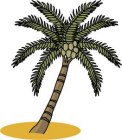 |
An example of a Monocot Coconut Tree |
Subscribe to:
Posts (Atom)
